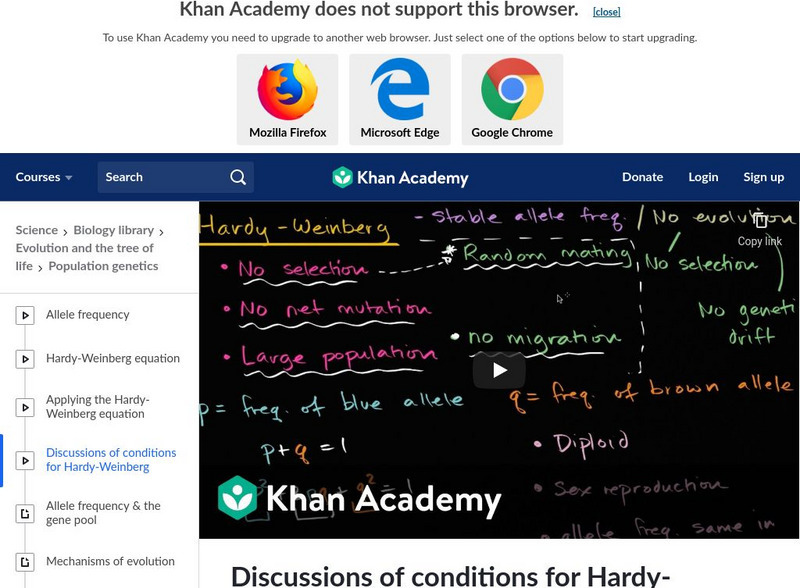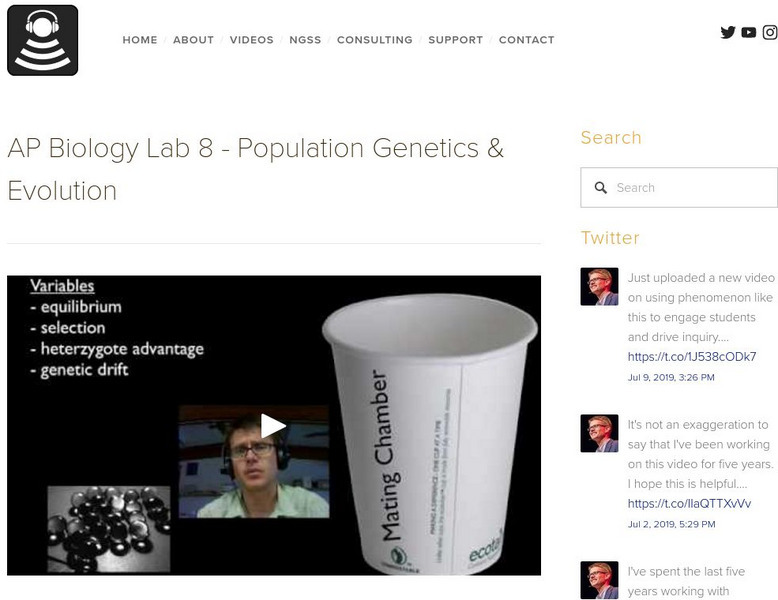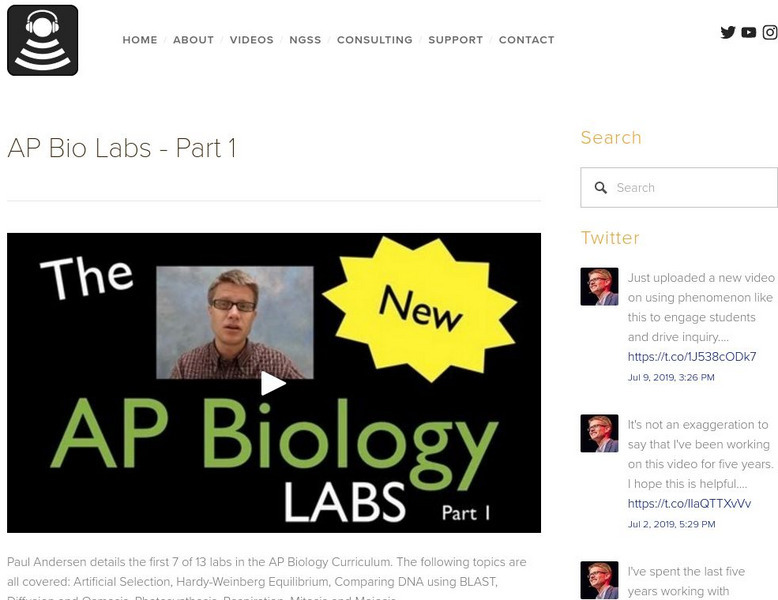Amoeba Sisters
Hardy-Weinberg Equilibrium
Explore the Hardy-Weinberg Equilibrium equations with The Amoeba Sisters! Learn why this equation can be useful, its five assumptions, and how to calculate genotype and allele frequencies with p and q values! This video does assume the...
Bozeman Science
Hardy-Weinberg Punnett Square
In this video Paul Andersen explains how you can combine the power of a Punnett square for an entire gene pool. Hardy-Weinberg equilibrium will remains constant under several constrains and the probability square makes the information...
msvgo
Hardy-Weinberg Principle
It explains Hardy-Weinberg principle including concepts such as founder effect, bottle neck effect and Hardy-Weinberg Equilibrium.
Bozeman Science
AP Biology Lab 8: Population Genetics and Evolution
Mr. Andersen explains Hardy-Weinberg equilibrium and describes the bead lab.
Crash Course
Population Genetics: When Darwin Met Mendel - Crash Course Biology
Hank talks about population genetics, which helps to explain the evolution of populations over time by combing the principles of Mendel and Darwin, and by means of the Hardy-Weinberg equation.
Bozeman Science
Population Variation
Paul Andersen explains the importance of genetic variation within a population. He begins with a discussion of the devil facial tumor that is a form of cancer transferred between Tasmanian devils. He then explains how a decrease in...
Bozeman Science
AP Biology Labs - part 1
Paul Andersen details the first 7 of 13 labs in the AP Biology Curriculum. The following topics are all covered: Artificial Selection, Hardy-Weinberg Equilibrium, Comparing DNA using BLAST, Diffusion and Osmosis, Photosynthesis,...
Bozeman Science
Solving Hardy-Weinberg Problems
What is a gene pool? What do gene pools have to do with the Hardy-Weinberg formula? How was this formula derived? After viewing a video that introduces these concepts, young scientists determine p and q values and then work sample...
Curated OER
Hardy-Weinberg Principle
After learning to calculate probabilities for single examples of genetic crosses in a previous lecture, students are exposed to the concept that allele and genotype frequencies in a population remain in constant equilibrium. A reasonable...
Teacher's Pet
Disruption of Genetic Equilibrium
Could a population stay the exact same over time with no change in allele frequencies? The video explains the Hardy-Weinberg equilibrium theorem and the assumptions it requires. It discusses mutation, migration, gene flow, genetic drift,...
Bozeman Science
Natural Selection
Between 1968 and 2002, the total number of peppered moths decreased by almost two thirds, although scientists do now know why. In the 10th video of the series, the instructor defines evolution as any changes to a gene pool. Scholars then...
Bozeman Science
Hardy-Weinberg Punnett Square
Scholars learn how to use a Punnett square analyzing red hair and then apply this process to an entire gene pool over time. The instructor walks viewers through a few problems, determining percentages found within a gene pool.
Teacher's Pet
Types of Natural Selection
Natural selection—good things come to those who mate. The video introduces the idea of natural selection. Then it details three types: directional, stabilizing, and disruptive. It includes both graphs and examples for each type.
Khan Academy
Khan Academy: Discussions of Conditions for Hardy Weinberg
An overview of what happens when the conditions for Hardy-Weinberg equilibrium are not fulfilled. [6:54]
Khan Academy
Khan Academy: Biology: Hardy Weinberg Principle
A detailed explanation of the Hardy-Weinberg Principle of genetic equilibrium. [14:57]
Bozeman Science
Bozeman Science: Ap Biology Lab 8 Population Genetics & Evolution
Mr. Andersen explains Hardy-Weinberg equilibrium and describes the bead lab. [6:00]
Bozeman Science
Bozeman Science: Ap Biology Labs Part 1
Paul Andersen details the first 7 of 13 labs in the AP Biology Curriculum. The following topics are all covered: Artificial Selection, Hardy-Weinberg Equilibrium, Comparing DNA using BLAST, Diffusion and Osmosis, Photosynthesis,...










